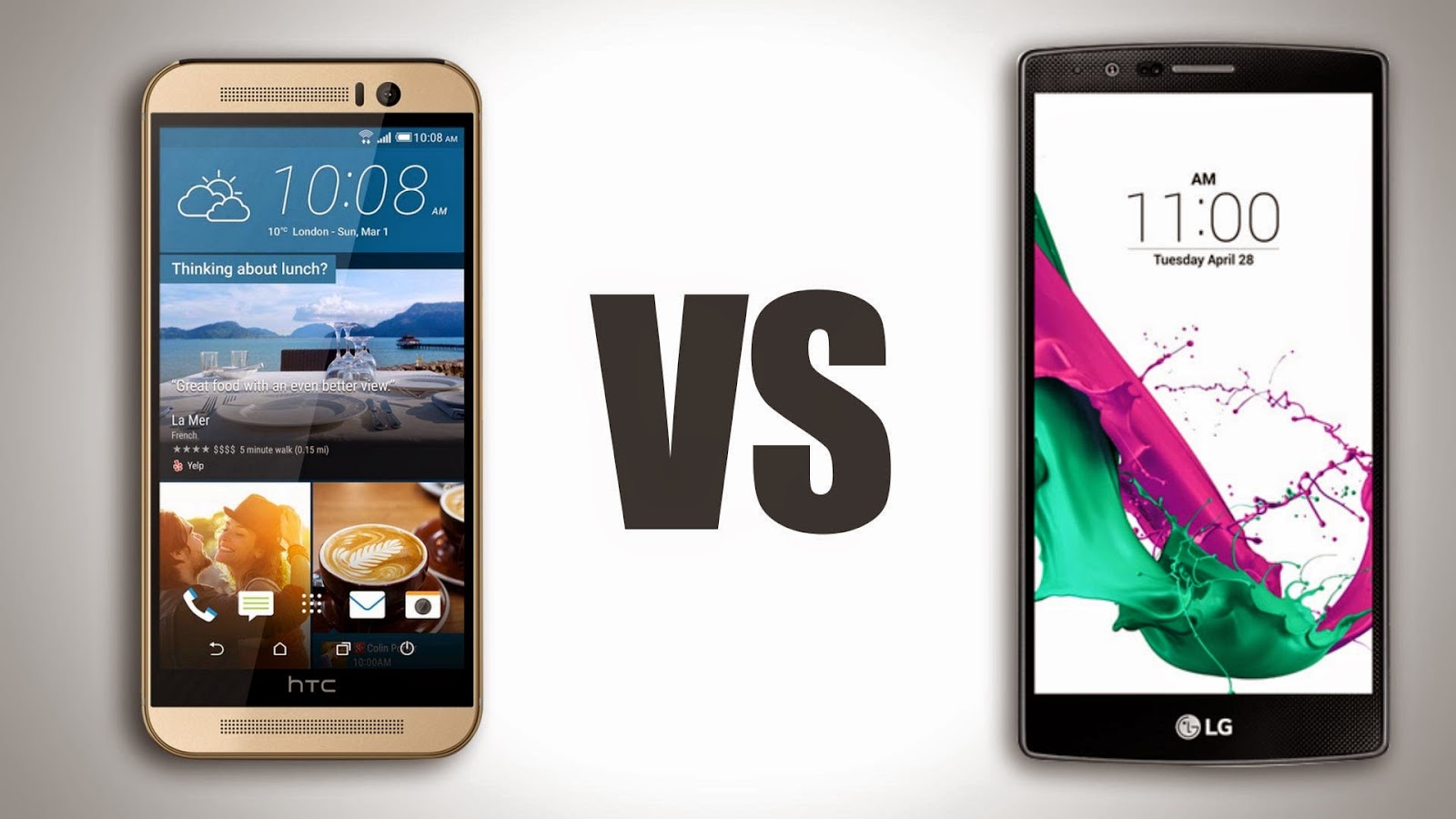Both LG G4 and HTC One M9 are best mobiles of 2015. But let us compare them, to make the best decision to buy one of them.
|
|
LG G4
|
HTC One M9
|
|
OS
|
Android OS, v5.1
(Lollipop)
|
Android OS, v5.0
(Lollipop)
|
|
Dimensions
|
148.9 x 76.1 x 9.8 mm (5.86
x 3.00 x 0.39 in)
|
144.6 x 69.7 x 9.6 mm
(5.69 x 2.74 x 0.38 in)
|
|
Weight
|
155 g (5.47 oz)
|
157 g (5.54 oz)
|
|
Display
|
5.5 inches (~72.5%
screen-to-body ratio), IPS LCD capacitive touchscreen, 16M colors, 1440 x
2560 pixels (~538 ppi pixel density)
|
5.0 inches (~68.4%
screen-to-body ratio), Super LCD3 capacitive touchscreen, 16M colors,
1080 x 1920 pixels (~441 ppi pixel density)
|
|
Battery
|
Li-Ion 3000 mAh
battery
|
Non-removable Li-Po
2840 mAh battery
|
|
Camera
(Primary/Back)
|
16 MP, 5312 x 2988
pixels, phase detection/laser autofocus, optical image stabilization,
dual-LED (dual tone) flash
|
20.7 MP, 5376 x 3752
pixels, autofocus, dual-LED (dual tone) flash
|
|
Camera Features
|
1/2.6'' sensor size,
simultaneous video and image recording, geo-tagging, face detection, HDR
|
Automatic simultaneous
video and image recording, geo-tagging, face/smile detection, HDR, panorama
|
|
Camera
(Secondary/Front)
|
8 MP, 1080p@30fps
|
4 MP, 1080p@30fps, HDR
|
|
Colors
|
Grey, White, Gold,
Leather Black, Leather Brown, Leather RedGrey, White, Gold, Leather Black,
Leather Brown, Leather Re
|
Gunmetal Gray, Amber
Gold, Silver/Rose gold, Gold/Pink
|
|
Audio
|
Vibration; MP3, WAV
ringtones, Loudspeaker with stereo speakers, 3.5mm jack.
|
Vibration; MP3, WAV
ringtones, Loudspeaker with stereo speakers, 3.5mm jack.
|
|
Video
|
2160p@30fps,
1080p@60fps, optical stabilization, HDR, stereo sound rec.
|
2160p@30fps,
1080p@60fps, 720p@120fps, HDR, stereo sound rec.
|
|
Memory
|
3 GB RAM
|
3 GB RAM
|
|
Storage
|
32 GB
|
32 GB
|
|
Processor
|
Dual-core 1.8 GHz
Cortex-A57 & quad-core 1.44 GHz Cortex-A53
|
Quad-core 1.5 GHz
Cortex-A53 & Quad-core 2 GHz Cortex-A57
|
|
Chipset
|
Qualcomm MSM8992
Snapdragon 808
|
Qualcomm MSM8994
Snapdragon 810
|
|
GPU
|
Adreno 418
|
Adreno 430
|
|
Connectivity
|
Micro SIM; 3.5 mm
audio. microUSB v2.0 (SlimPort 4K), USB Host, Bluetooth v4.1, A2DP, LE, apt-X,
Wi-Fi 802.11 a/b/g/n/ac, dual-band, Wi-Fi Direct, hotspot.
|
Nano SIM; 3.5 mm
audio. microUSB v2.0 (MHL 3.0 TV-out), USB Host, Bluetooth v4.1, A2DP,
apt-X, Wi-Fi 802.11 a/b/g/n/ac, dual-band, Wi-Fi Direct, DLNA, hotspot.
|
|
Sensors
|
Accelerometer, gyro,
proximity, compass, barometer
|
Accelerometer, gyro,
proximity, compass.
|
Now you decide which one is the best.











